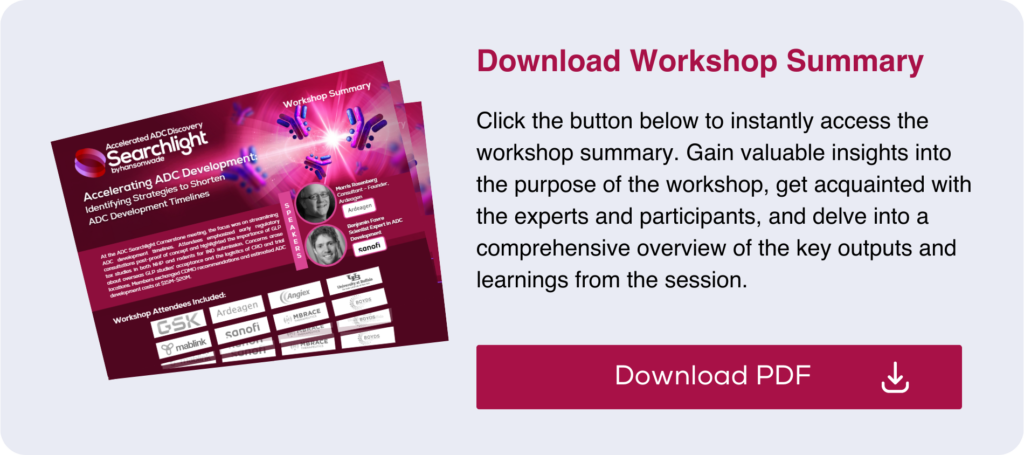Searchlight Workshop: Revolutionizing ADC Development Timelines
Initiating Change with Early Testing
The workshop kicked off with a strong emphasis on early testing in ADC development. They explained that early TOX/PK tests, taken during the conjugation phase, could provide a clearer roadmap for later, pricier GLP tox stages. These proactive measures aim to protect substantial investments, ensuring money is well spent. They also touched on stability, highlighting its critical role. By securing solid stability data for at least a month prior to an IND submission, they believe developers can create a more robust application.
Diverse Strategies for Streamlined ADC Development
Navigating ADC development isn’t without challenges. They offered insights and strategies for addressing common pitfalls. They spotlighted the recurring issue of backlogs at both CROs and CMOs. Their solution? Book studies and tests early to sidestep delays. On the formulation front, they urged developers to be especially cautious with ADC formulations, given their propensity to aggregate, particularly when dealing with hydrophobic payloads.
Benjamin’s presentation gave attendees a detailed look into Sanofi’s strategy. Distilled into three main pillars – reshaping timelines, fine-tuning methodologies, and harnessing high-throughput development – they provided a blueprint for success. Using hands-on case studies, they explored specific challenges and solutions. For instance, they dissected filtration processes, championing the advantages of cellulose, optimal pH levels, and precise cut-offs. Another case study demonstrated the benefits of high-throughput setups, suggesting their potential for quicker and more accurate data collection.
Harnessing Lessons from the Past
Tapping into past experiences can offer invaluable insights. They posed an interesting question: could the rapid drug development seen during Covid be replicated for oncology ADCs? Delving into this, they weighed the risks and rewards of such an approach, particularly for high-priority patient groups. They also shed light on the fluctuating timeline between IND approval and administering the first dosage. Several factors play a part in this, such as the readiness of clinical settings and timely contract signings. Their key message? Choosing the right clinical trial site can make all the difference.
In conclusion, the Searchlight Workshop served as a rich resource for those navigating the complexities of ADC development. By drawing from shared experiences and insights, they provided a clearer path forward.

